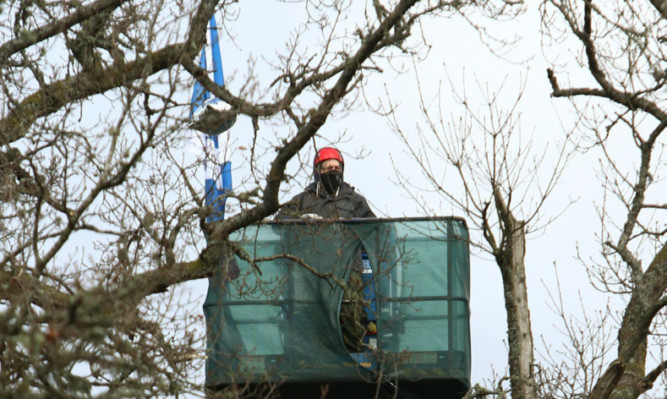A leading wildlife organisation has said it will not be taking legal action against T in the Park, despite a cherry picker complete with Saltire and balloons being placed near an osprey nest in Perthshire.
The controversial move to use the giant crane, which had an ornithologist on top of it yesterday, has been defended by festival organiser DF Concerts.
The company said it is designed to dissuade the birds from returning to the existing nest and force them to go to a newly created one in the Strathallan Castle estate the proposed site of the festival, if given planning permission.
It has been claimed T in the Park may not go ahead if the ospreys return to the existing nest as thousands of revellers could disturb the birds.
The Strathallan T Action Group (Stag), which opposes the event relocating to Strathallan, is asking for action to be taken to remove the cherry picker.
A spokesman for the Royal Society for the Protection for Birds Scotland said although it is a “bit of a grey” area, the charity feels the use of the cherry picker by DF Concerts is on the “right side of the law”.
But he added that the situation regarding the creation of the osprey nest, the use of the cherry picker and planning approval being needed does not reflect well on T in the Park.
“It didn’t have to be like this,” he told The Courier. “DF Concerts are taking a big risk with the new nest.
“If the ospreys don’t come back to the existing nest or the new one, this is not something we would like to see.
“DF Concerts are doing things at the last minute and now have a headache they would like to see go away.
“I feel they aren’t managing the situation well and we’ll have to see the outcome of the nesting issue in terms of wildlife.”
A spokeswoman for DF Concerts said removing the existing “weather-damaged” nest entirely is its preferred option.
“We have not and would never attempt to scare the ospreys,” she said.
“The cherry picker approach is designed to gently encourage them to fly to the new, specially-built nest a short distance away.
“This approach would not be used at all if the landowner concerned would allow access to their land to remove the old nest.
“In the meantime we have ornithologists on site monitoring the situation to make sure things are done properly.”
